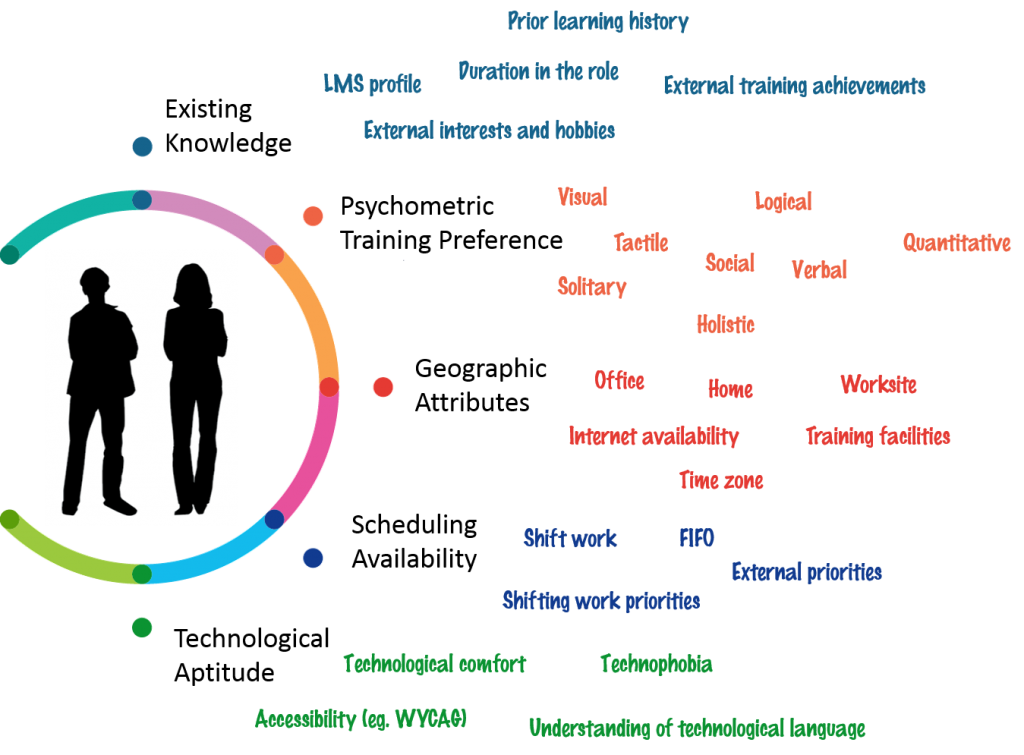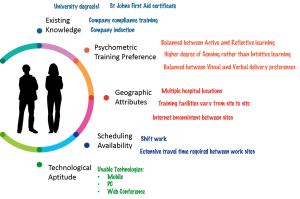
This is the second blog in a series that looks at the learning principles behind blended learning, the needs of the audience and how these are determined, the technologies available and combining all these aspects together.
The needs of the learner are paramount when developing a single course, an entire curriculum or a blended training program, as I pointed out in my first blog. However these needs can be many and varied and in order to produce the best possible training, in this case blended training, they must be analysed and understood, in this post we will look at how we can group and identify these needs as well as looking at a case study on how we can apply the findings of our analysis.
In order to determine your learners needs it’s important to arrange the needs into groups, this allows you to focus on and compartmentalise different aspects of the learners’ profile. Focusing on different groups of requirements, one group at a time, provides more clarity of thought from yourself and therefore a more comprehensive learner profile.
When developing a learner profile for a blended course I use the following profile groupings:
- Existing knowledge, skills and experience
- Psychometric training preference
- Geographic attributes
- Scheduling availability (time available to undertake training)
- Technological aptitude
Now obviously some of these groupings will be hard to attain for your full audience on an individual basis, such as the psychometric training preference and the technological aptitude, unless you are in the enviable position of having access to or being able to gather that data from all of your learners. In such instances where individual data is not available then time should be taken to survey a sample of your learners with a view to providing a reasonable estimate of these elements.
Here are some examples of the type of information you can collect within these groups:
Once the information about the learner group is collected and collated you can arrive at a profile for that group, which broadly speaking covers their:
- Requirements for the intended training
- The instruction design and delivery requirements for the training
- The appropriate delivery methods to be used
Later in this blog series I will discuss each of the above and the details we can draw from our learner profile that will help us to determine these factors.
So let’s overlay our basic profile with a case study for a specific working group to develop an actual profile that we can use for the remaining blogs in the series.
The profile I will define will be that of a fictitious regional nurse.
Now that we have profile to work from, we can proceed to planning of our blended course. In my next post we will start this process by comparing our learner profile with the requirements for the intended training to see where we need to focus to achieve the maximum benefit for our learners.


